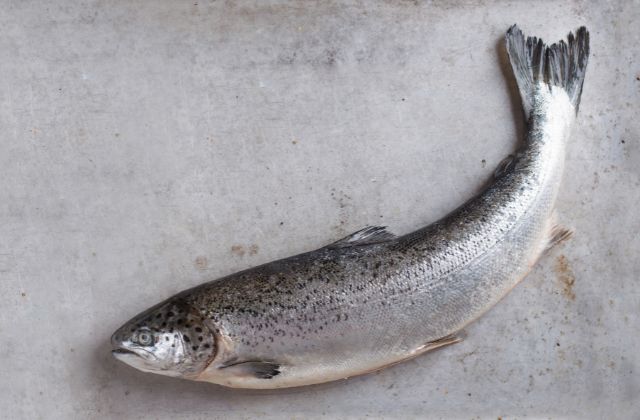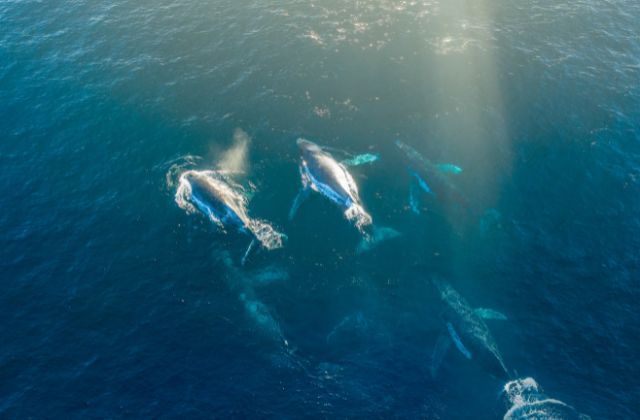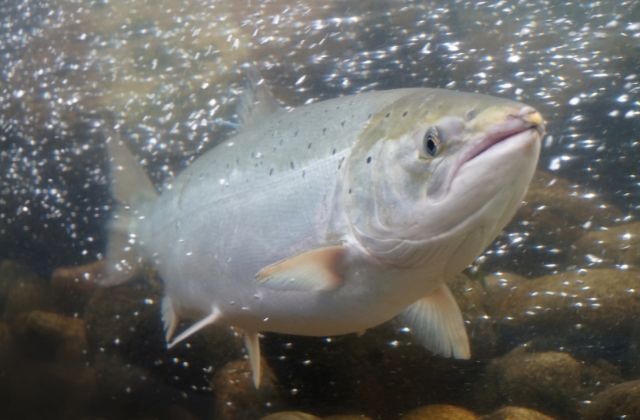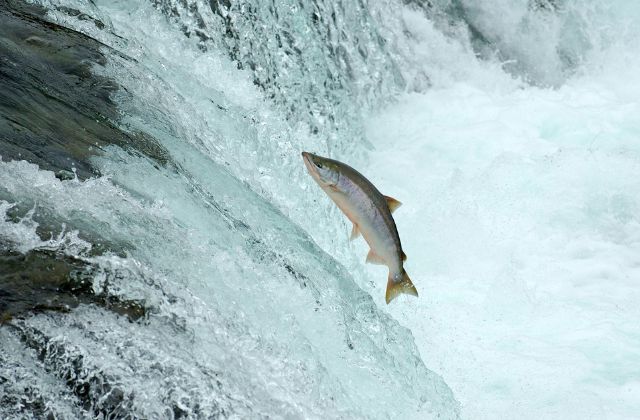10 Interesting Facts About Salmon Fish for Kids
Salmon is the common name for various fish species in the Salmonidae family. They are indigenous to North Atlantic and Pacific Ocean tributaries. Pacific salmon come in seven varieties. Chinook, coho, chum, sockeye, and pink Salmon are all found in North American waters. Masu and amago Salmon are exclusively found in Asia. There is only one type of Atlantic salmon.

In this article, we will be sharing some interesting salmon facts for kids to learn and gain some knowledge about these fish species.
Here are some interesting facts about Salmon:
1. Salmon are considered a keystone species, meaning they rely on other natural species.
Salmon not only supply nutrients to streams and rivers since they die after spawning, but they are also an essential element of the diet of other land-dwelling species. Studies demonstrated salmon to be essential in restoring nutrients to forests by carrying salmon carcasses from the stream and into the forest to consume. Many components of the natural system begin to shift when keystone species are removed from their habitats. Beavers and wolves are two further examples of keystone species.
2. The color of Salmon can vary.

Salmon may be three different shades during their lives. They can be blue, crimson, or silver. Some animals have black dots and red stripes on their bodies. During the mating season, salmons alter the color of their bodies as they migrate from the ocean to freshwater environments in order to attract a spawning mate.
Sockeye salmon, for example, are light-colored and speckled as youngsters before becoming silvery blue as adults in the ocean. When adults are ready to spawn, their bodies turn a bright red, and their heads turn green.
3. Salmon are drawn to both saltwater and freshwater.
Salmon are “anadromous,” or able to live in both salt and fresh water. They are born in freshwater and stay there for a good amount of time before venturing out to sea.
When the time comes, they come back to freshwater to spawn. Only a few fish can withstand such dramatic salinity changes, and they would die if transported from salty to freshwater like Salmon. When saltwater fish come into contact with fresh water, their cells may explode.
Osmoregulation occurs when freshwater fish are exposed to saline water, and their cells shrink. Luckily, Salmon have excellent behavioral and physiological adaptations that allow them to survive in both environments.
4. Salmon migrate to the sea to grow.

Since the energy content and availability of food in the ocean are significantly larger than in freshwater, fish may grow quite large and very rapidly. This is significant because larger fish are less likely to be eaten, and females lay more eggs. A large number of eggs are required to generate enough juveniles that will mature and return to spawn, hence sustaining the population.
5. A female salmon may carry over 4,000 eggs.
A female salmon may lay anywhere from 1,500 to 10,000 eggs. Only around 10 of these eggs will develop into adult salmon. On average, a population of the same size produces one adult from each parent (two adults from each spawning pair), although this fluctuates from year to year.
6. Salmon are primarily omnivores.

They may consume a wide variety of small amphibians and ocean food, such as capelin, Atlantic herring, sand lance, barracudina, and lanternfish. Crustaceans like amphipods and euphausiids, sometimes known as “krill.”
Young Salmon consume insects, amphipods, and other crustaceans; adults feed mostly on other fish, as well as squid, eels, and shrimp. Sockeye salmon, unlike all other Salmon, is almost entirely made up of plankton.
7. Many Salmon die after spawning.
Salmon spend their whole lives returning to their native stream, laying eggs, and building a nest. Salmon stop feeding when they return to fresh water and lose their ability to return to the ocean after spawning. When they die, other animals consume them, so providing nutrients to the stream. Steelhead trout continue to eat in freshwater, and, as a result, many survive and migrate to the sea. They can develop for another year before reproducing.
8. Salmon can be shy sometimes.

Scientists have discovered that Atlantic Salmon, like many other fish species, have distinct personalities. Some salmon are timider than others. Despite common assumptions, Salmon, like other fish, may be highly leader-shy under certain settings. A leader may have little or no influence in some extremely specialized situations.
9. When salmon spawn, they return to the stream where they were born.
Pacific salmon expend all of their energy to return to their home stream, lay eggs, and dig their nest. When they return to freshwater, most of them stop feeding because they lack the stamina to return to the ocean after spawning. They return to the stream where they were born because they know that it is an excellent spot to spawn; they will not waste time searching for a stream with suitable habitat and other Salmon.
10. Fish passage is required for adult salmon to move upriver to spawn.
A fish ladder, also known as a fishway, is frequently built to assist Salmon in swimming upstream past a dam or natural barrier that may restrict or delay access to spawning areas.
Downstream passage of migratory smolts and certain post-spawned adults to flow downriver to reach the sea is occasionally given by building a bypass structure or allowing enough water to pour over a dam.
Conclusion
We hope that you found the above facts about Salmon for kids interesting. For more such facts, visit our website!
